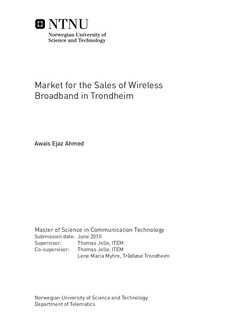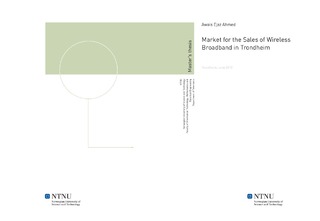| dc.description.abstract | Wireless Trondheim is today mainly a service for nomadic and mobile broadband in other words, for use outside the home. The major goal of this study was to examine the market potential and the ability to use wireless broadband offered by Wireless Trondheim, as the primary internet access in the home. The study started with an introduction to the Wireless Trondheim, before introducing the different types of broadband technologies available in the Norwegian market. This study further looked into some successful city-wide Wi-Fi based network initiatives in the Europe, specifically City of Luxembourg and City of Westminster in London. Their objectives, business models, pricing strategies and broadband networks were examined. It provided us with a good insight about the market strategies these wireless cities are using and the achievement they have made. However, it was difficult to inspect how much these networks were used for internet connection at home.To justify the goal of this study, a quantitative random sampling method through structured web-based questionnaire was carried out. The respondents or targeted population was those residents in Trondheim who do not have free access to Wireless Trondheim s network. A number of hypotheses were observed in order to understand the market of wireless broadband. Questionnaire emphasized on the inhabitant s awareness and willingness towards the wireless broadband subscription. The satisfaction level regarding the coverage provided by Wireless Trondheim and the amount of people using their network as the primary access at home was examined. Results indicated that more than half of the respondents did not have access to the Wireless Trondheim at home. One-fourth of the respondents had access to both wireless broadband and other types of connection interfaces, such as fixed or mobile broadband. Majority of the respondents reported that they did not use Wireless Trondheim to connect internet at home. More than half of the respondents were not satisfied with the coverage provided to them. Also very few people knew about the wireless broadband offer, leading to the fact that minority was willing to buy a wireless broadband subscription. However, it is important to remember that majority of the respondents were living outside of Midtbyen. Hence, only few of these had coverage provided by Wireless Trondheim. However, results were divided into two categories according to the respondent s residential status. It was clear in the end that in addition to increase the coverage, marketing on the wireless broadband service is highly needed to increase the demand | nb_NO |

